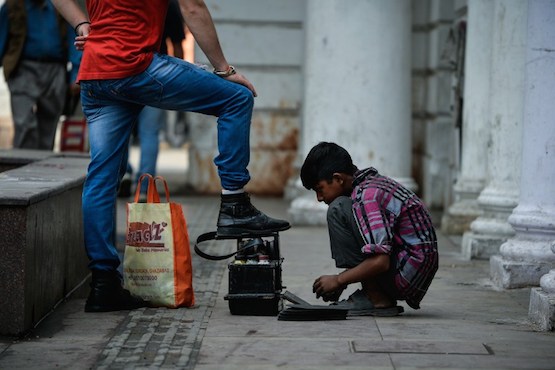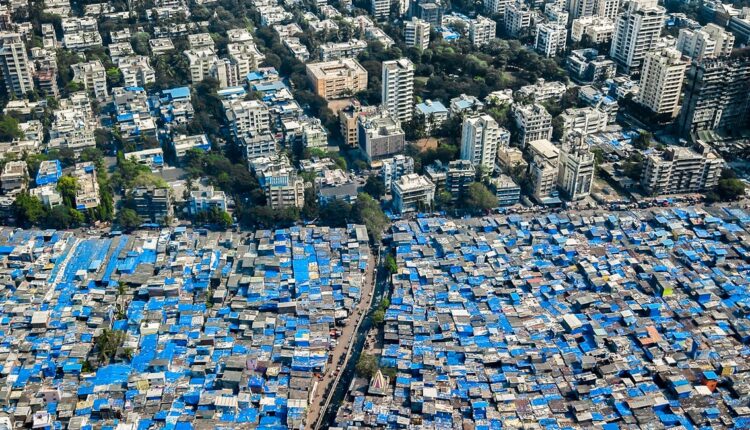 Experts blame rapid industrialisation and technological advancement for the rising unemployment in the country. It is also believed that automation and technology have the ability to replace medium-skilled jobs, which further de-emphasises the need for labour, creating large-scale unemployment. Additionally, there is a skill bias where increased productivity due to technology directly makes its way to the capital, rather than labour making technology capital biased. While the use of technology is cost-effective, skilled labour becomes more in demand whereas demand for less-skilled counterparts becomes less in demand. It further establishes the reinforcing cycle of wealth and income inequality.
However, these are not the only problems that lead to income inequality. It is unfair to discount the fact that many highly-skilled, tech-literate workers remain unemployed. Despite this, the wage gap is still increasing at a very high rate. It is also important to note that many countries with a higher rate of technological penetration still remain less unequal as compared to India proves that technology is not the only culprit in dictating inequality. In my opinion, technology has increased employment for medium and less-skilled workers. Companies like Ola, Uber, Zomato, Flipkart, among others have created jobs, especially in the service sector.
So then what is the reason for such a massive income gap? There is no definitive answer to this. India consists of one of the largest working-class populations in the world. A large number of labour force in low productivity sectors such as agriculture which account for 53% jobs but only 17% of the nation’s GDP.
Accurate data about India’s income inequality is not readily accessible but studies show that income inequality had declined between the 1950s and 1980s but it has only grown since then. In the last few decades, India has made advances in healthcare and education but the distribution of these facilities is unequal at best. Education remains a major concern in the country. Many government-run schools and colleges do not have the infrastructure and facilities to accommodate and provide quality education to its students, this leads to a plethora of problems – primarily, the level of education reflects the level of skill one possesses. So someone with a higher level of education is likely to be paid more than someone with a lower level of education, even if their skill levels are the same. Access to education, let alone quality education, is not great for a country like India whose vast population consists of mainly the youth.
Experts blame rapid industrialisation and technological advancement for the rising unemployment in the country. It is also believed that automation and technology have the ability to replace medium-skilled jobs, which further de-emphasises the need for labour, creating large-scale unemployment. Additionally, there is a skill bias where increased productivity due to technology directly makes its way to the capital, rather than labour making technology capital biased. While the use of technology is cost-effective, skilled labour becomes more in demand whereas demand for less-skilled counterparts becomes less in demand. It further establishes the reinforcing cycle of wealth and income inequality.
However, these are not the only problems that lead to income inequality. It is unfair to discount the fact that many highly-skilled, tech-literate workers remain unemployed. Despite this, the wage gap is still increasing at a very high rate. It is also important to note that many countries with a higher rate of technological penetration still remain less unequal as compared to India proves that technology is not the only culprit in dictating inequality. In my opinion, technology has increased employment for medium and less-skilled workers. Companies like Ola, Uber, Zomato, Flipkart, among others have created jobs, especially in the service sector.
So then what is the reason for such a massive income gap? There is no definitive answer to this. India consists of one of the largest working-class populations in the world. A large number of labour force in low productivity sectors such as agriculture which account for 53% jobs but only 17% of the nation’s GDP.
Accurate data about India’s income inequality is not readily accessible but studies show that income inequality had declined between the 1950s and 1980s but it has only grown since then. In the last few decades, India has made advances in healthcare and education but the distribution of these facilities is unequal at best. Education remains a major concern in the country. Many government-run schools and colleges do not have the infrastructure and facilities to accommodate and provide quality education to its students, this leads to a plethora of problems – primarily, the level of education reflects the level of skill one possesses. So someone with a higher level of education is likely to be paid more than someone with a lower level of education, even if their skill levels are the same. Access to education, let alone quality education, is not great for a country like India whose vast population consists of mainly the youth.
 Experts blame rapid industrialisation and technological advancement for the rising unemployment in the country. It is also believed that automation and technology have the ability to replace medium-skilled jobs, which further de-emphasises the need for labour, creating large-scale unemployment. Additionally, there is a skill bias where increased productivity due to technology directly makes its way to the capital, rather than labour making technology capital biased. While the use of technology is cost-effective, skilled labour becomes more in demand whereas demand for less-skilled counterparts becomes less in demand. It further establishes the reinforcing cycle of wealth and income inequality.
However, these are not the only problems that lead to income inequality. It is unfair to discount the fact that many highly-skilled, tech-literate workers remain unemployed. Despite this, the wage gap is still increasing at a very high rate. It is also important to note that many countries with a higher rate of technological penetration still remain less unequal as compared to India proves that technology is not the only culprit in dictating inequality. In my opinion, technology has increased employment for medium and less-skilled workers. Companies like Ola, Uber, Zomato, Flipkart, among others have created jobs, especially in the service sector.
So then what is the reason for such a massive income gap? There is no definitive answer to this. India consists of one of the largest working-class populations in the world. A large number of labour force in low productivity sectors such as agriculture which account for 53% jobs but only 17% of the nation’s GDP.
Accurate data about India’s income inequality is not readily accessible but studies show that income inequality had declined between the 1950s and 1980s but it has only grown since then. In the last few decades, India has made advances in healthcare and education but the distribution of these facilities is unequal at best. Education remains a major concern in the country. Many government-run schools and colleges do not have the infrastructure and facilities to accommodate and provide quality education to its students, this leads to a plethora of problems – primarily, the level of education reflects the level of skill one possesses. So someone with a higher level of education is likely to be paid more than someone with a lower level of education, even if their skill levels are the same. Access to education, let alone quality education, is not great for a country like India whose vast population consists of mainly the youth.
Experts blame rapid industrialisation and technological advancement for the rising unemployment in the country. It is also believed that automation and technology have the ability to replace medium-skilled jobs, which further de-emphasises the need for labour, creating large-scale unemployment. Additionally, there is a skill bias where increased productivity due to technology directly makes its way to the capital, rather than labour making technology capital biased. While the use of technology is cost-effective, skilled labour becomes more in demand whereas demand for less-skilled counterparts becomes less in demand. It further establishes the reinforcing cycle of wealth and income inequality.
However, these are not the only problems that lead to income inequality. It is unfair to discount the fact that many highly-skilled, tech-literate workers remain unemployed. Despite this, the wage gap is still increasing at a very high rate. It is also important to note that many countries with a higher rate of technological penetration still remain less unequal as compared to India proves that technology is not the only culprit in dictating inequality. In my opinion, technology has increased employment for medium and less-skilled workers. Companies like Ola, Uber, Zomato, Flipkart, among others have created jobs, especially in the service sector.
So then what is the reason for such a massive income gap? There is no definitive answer to this. India consists of one of the largest working-class populations in the world. A large number of labour force in low productivity sectors such as agriculture which account for 53% jobs but only 17% of the nation’s GDP.
Accurate data about India’s income inequality is not readily accessible but studies show that income inequality had declined between the 1950s and 1980s but it has only grown since then. In the last few decades, India has made advances in healthcare and education but the distribution of these facilities is unequal at best. Education remains a major concern in the country. Many government-run schools and colleges do not have the infrastructure and facilities to accommodate and provide quality education to its students, this leads to a plethora of problems – primarily, the level of education reflects the level of skill one possesses. So someone with a higher level of education is likely to be paid more than someone with a lower level of education, even if their skill levels are the same. Access to education, let alone quality education, is not great for a country like India whose vast population consists of mainly the youth.


Comments are closed.